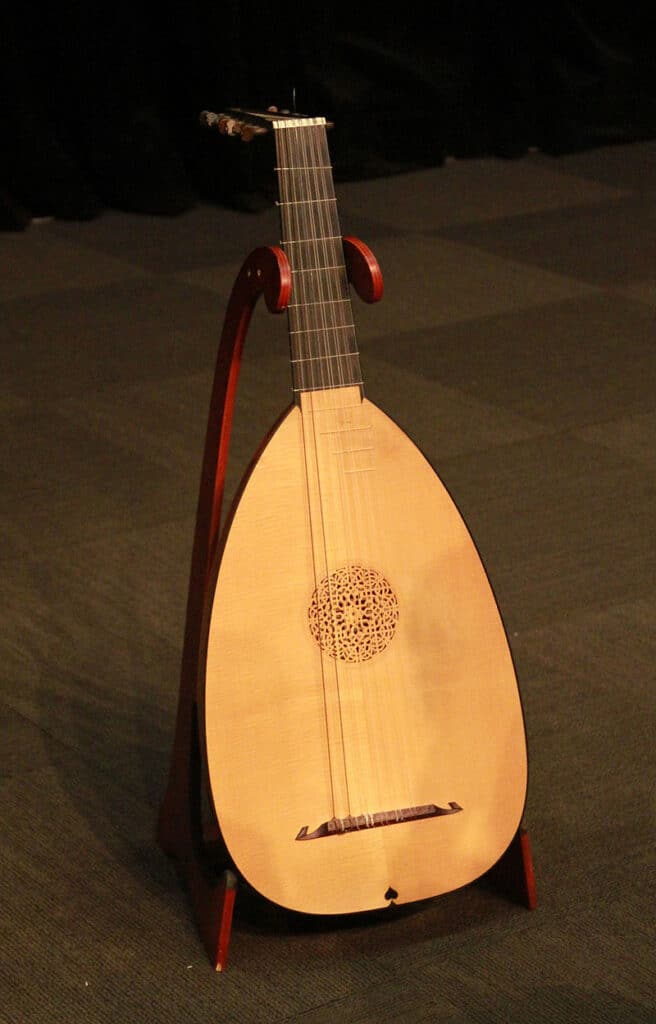The dulcimer and the lute are both stringed musical instruments with distinct characteristics and origins. While they may share similarities in terms of construction and purpose, there are notable differences that set them apart. In this article, we take a closer look at the dulcimer vs lute.
Origins and History
When comparing the dulcimer vs lute, let’s first start off with their construction.
The dulcimer is believed to have originated in the Middle East and has a rich history spanning several centuries. It has different variations and names across various cultures, such as the hammered dulcimer, mountain dulcimer, and santoor. The dulcimer’s history can be traced back to ancient civilizations such as the Persians and the Byzantines.
On the other hand, the lute has its roots in ancient civilizations, particularly in the regions of Mesopotamia and Egypt. It gained popularity during the Middle Ages and the Renaissance period. The lute is often associated with Western classical music and was a prominent instrument in Europe during the 16th and 17th centuries.

Source: Wikipedia
Construction
When in comes to the dulcimer vs autoharp, there are some notable differences in terms of construction.
The dulcimer typically consists of a trapezoidal or hourglass-shaped soundboard made of wood. It features multiple strings that are usually arranged in courses or pairs. In the hammered dulcimer, the strings are struck with small hammers or mallets. While in other variations, such as the mountain dulcimer, the strings are plucked or strummed with the fingers or a pick.
The lute, on the other hand, has a rounded body with a soundboard made of wood. It has a long neck with frets and a headstock. The strings are plucked with the fingers or with a pick (or plectrum). The number of strings can vary, but it usually has multiple courses of strings, creating a rich and resonant sound.
Playing Technique
Regarding playing technique, there are few differences when comparing the mountain dulcimer vs lute. However, the hammered dulcimer and lute are quite different.
Playing the dulcimer involves striking the strings with hammers or mallets. The player can vary the intensity and speed of the strikes to produce different tones and rhythms. The dulcimer can be played with both hands, allowing for intricate melodies and chord progressions.
The lute is played by plucking the strings with the fingers or a plectrum. The player can use various techniques, including fingerpicking, strumming, and plucking individual strings. The lute’s construction and fretted neck allow for intricate melodic lines, harmonies, and chord progressions.
Musical Styles and Repertoire
In terms of musical style and repertoire, there are distinct differences when comparing the dulcimer vs lute.
The dulcimer is versatile and is found in various musical traditions, ranging from folk and traditional music to contemporary genres. It is commonly associated with Appalachian folk music in the United States. The dulcimer’s percussive sound and melodic capabilities make it suitable for both solo performances and ensemble playing.
The lute, with its historical significance in Western classical music, is primarily associated with Renaissance and Baroque repertoire. It has been used in chamber music, solo performances, and as an accompanying instrument. The lute’s warm and resonant sound lends itself well to intricate melodic lines and polyphonic compositions.
Dulcimer vs Lute – Summary
When comparing the dulcimer vs. lute, both share similar characteristics. While both the dulcimer and the lute are stringed instruments, they differ in terms of origin, construction, playing technique, and musical repertoire.
The dulcimer’s percussive nature and versatility make it suitable for folk and traditional music. On the other hand, some feel the lute offers a warmer sound than the dulcimer- making it more of a staple in Western classical music.




